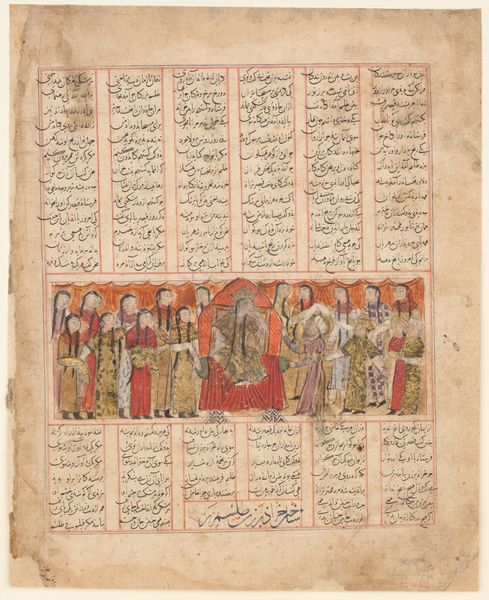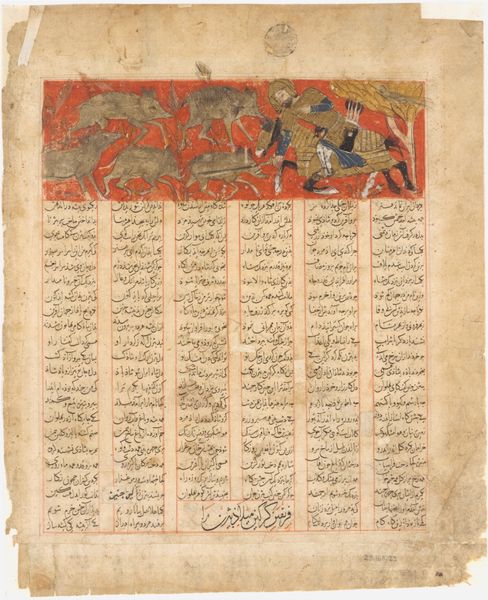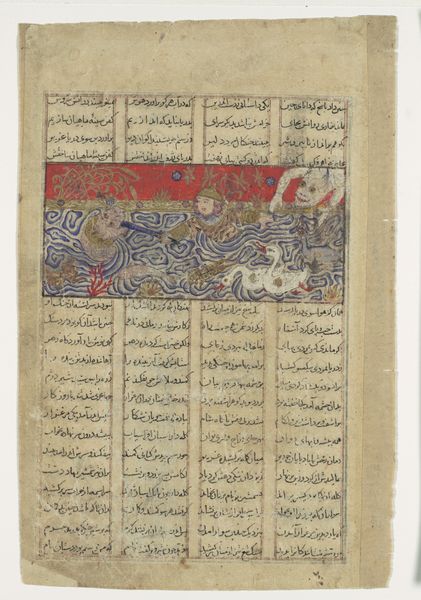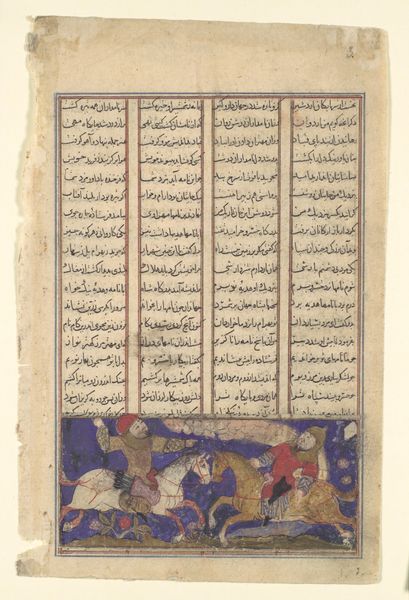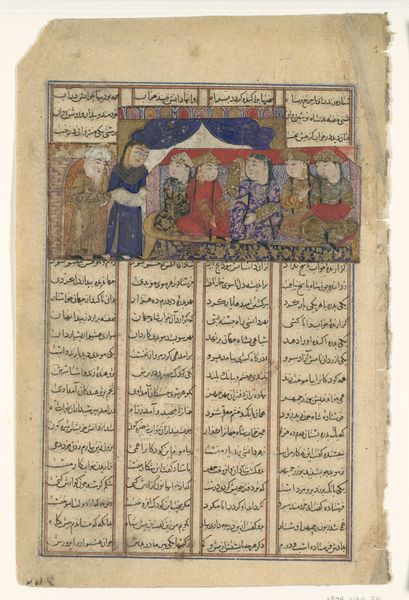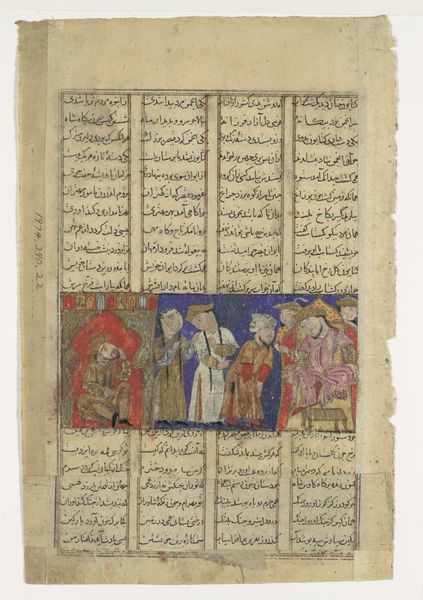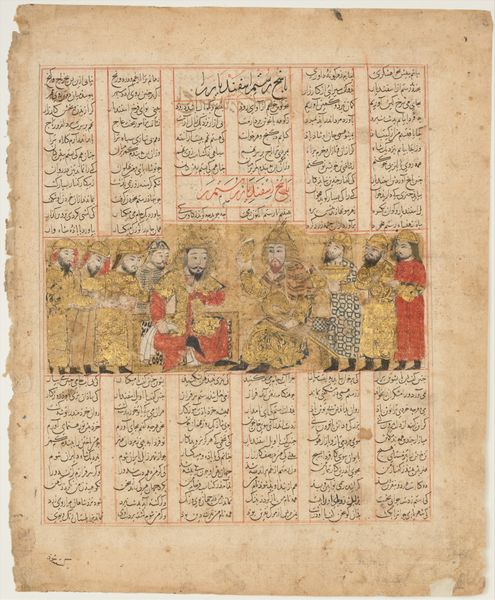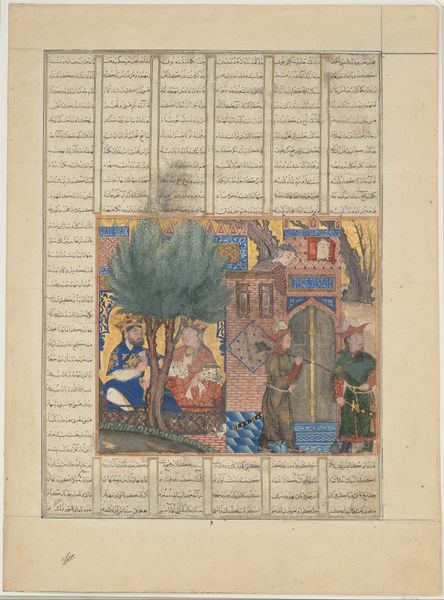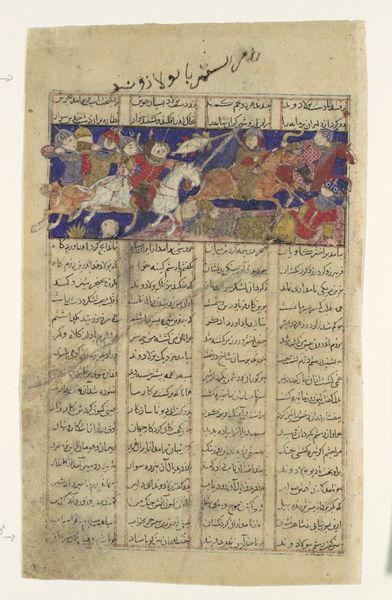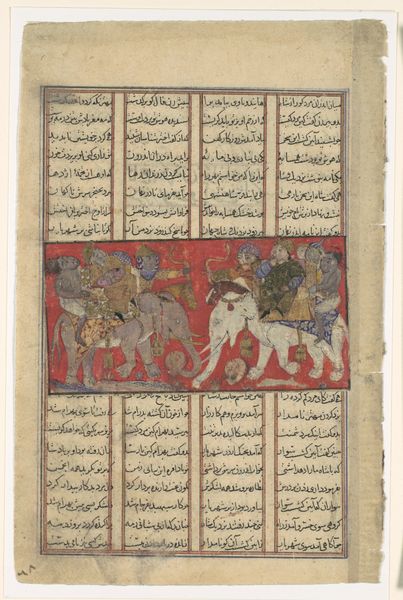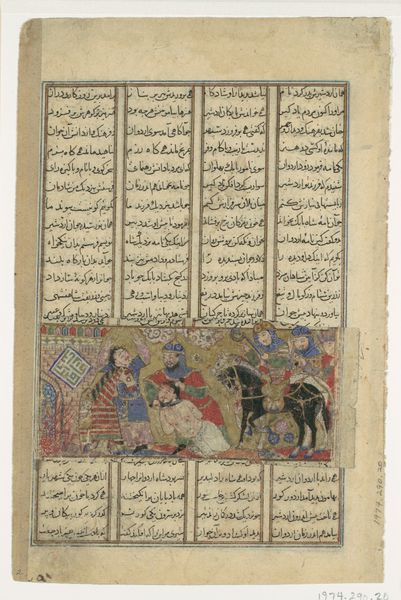
painting, watercolor, ink
#
medieval
#
water colours
#
narrative-art
#
painting
#
figuration
#
oil painting
#
watercolor
#
ink
#
islamic-art
#
miniature
#
watercolor
Dimensions: 9 5/8 x 7 3/8 in. (24.5 x 18.7 cm)
Copyright: Public Domain
Editor: Here we have "Story of Haftvad," a painting from around 1300, housed at the Minneapolis Institute of Art. The medium is listed as watercolor and ink. It's got such a busy composition, full of figures and text. What do you see in this piece? Curator: From a formalist perspective, I observe a deliberate orchestration of elements that creates a unique visual experience. The composition is neatly structured into horizontal registers of calligraphy framing the imagery, immediately drawing the eye across a clear distinction between text and image. We could analyse it semiotically to try to decode these registers, what would be your take on it? Editor: The calligraphy is almost like a border or frame around the central image, separating and highlighting the art, and the story. The figures, they're clustered in this golden landscape with blue tones. They don't seem to occupy space in a realistic way; they’re arranged for compositional balance instead, like pieces in a design. Curator: Precisely. And consider the artist's employment of colour. Notice the flattening effect – shades do not modulate to create dimension but act in more of a decorative manner, creating symbolic rather than representational impact. Does that flatten the piece overall for you? Editor: It does flatten it somewhat, but there's detail in the figures that grabs my attention; the folds of their robes, their facial features. There’s also this striking contrast between the warm golds and the cooler blues. Curator: The interplay of line, form and colour serves to invite an inquiry of balance and relationships. Do these relationships and construction hint to a broader symbolic understanding, outside its plain viewing? Editor: Possibly! Analyzing the structure gives me so much to consider that I would not have seen at first glance. Curator: Indeed! Appreciating the intrinsic qualities enriches our aesthetic experience.
Comments
minneapolisinstituteofart almost 2 years ago
⋮
A group of women spin cotton outside the village of Kerman. The setting, with gold sky and fantastical landscape, shows the influence of Chinese painting, brought to Persia with Mongolian rule. This scene, identified in the text at the top of the page, foreshadows the story of Haftvad, a modest man whose daughter, seen at the far right, discovers a worm while biting into an apple. Considering it a lucky charm, she keeps the worm in her spindle case and soon begins spinning miraculous quantities of cotton. Recognizing this good fortune, Haftvad takes the worm and nurtures it until it grows to the size of an elephant. As the worm grows, so does Haftvad’s wealth and power. Eventually, King Ardeshir grows envious and comes to Kerman, where he defeats Haftvad and kills the worm.
Join the conversation
Join millions of artists and users on Artera today and experience the ultimate creative platform.

